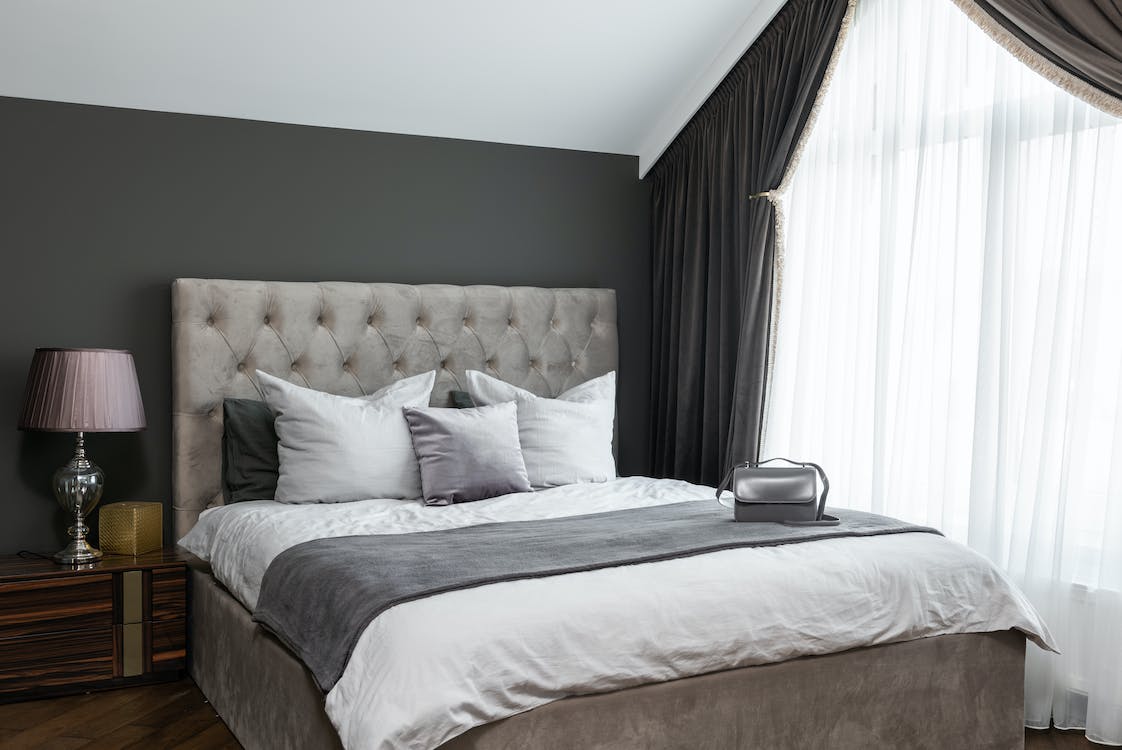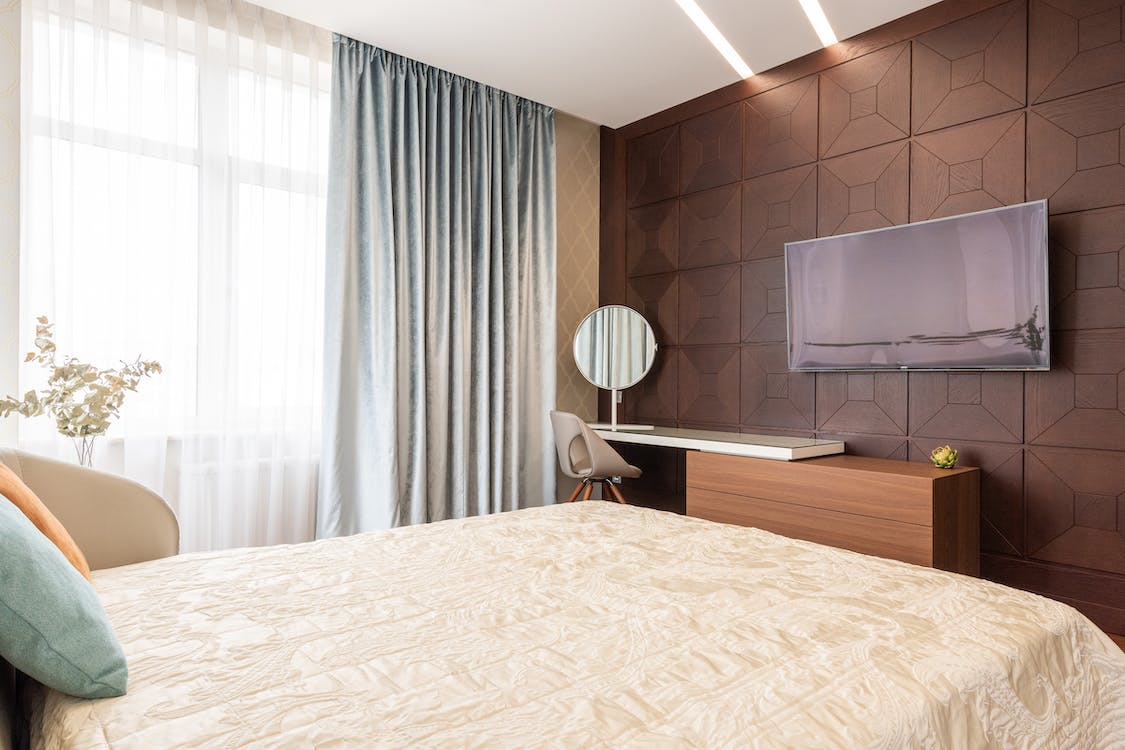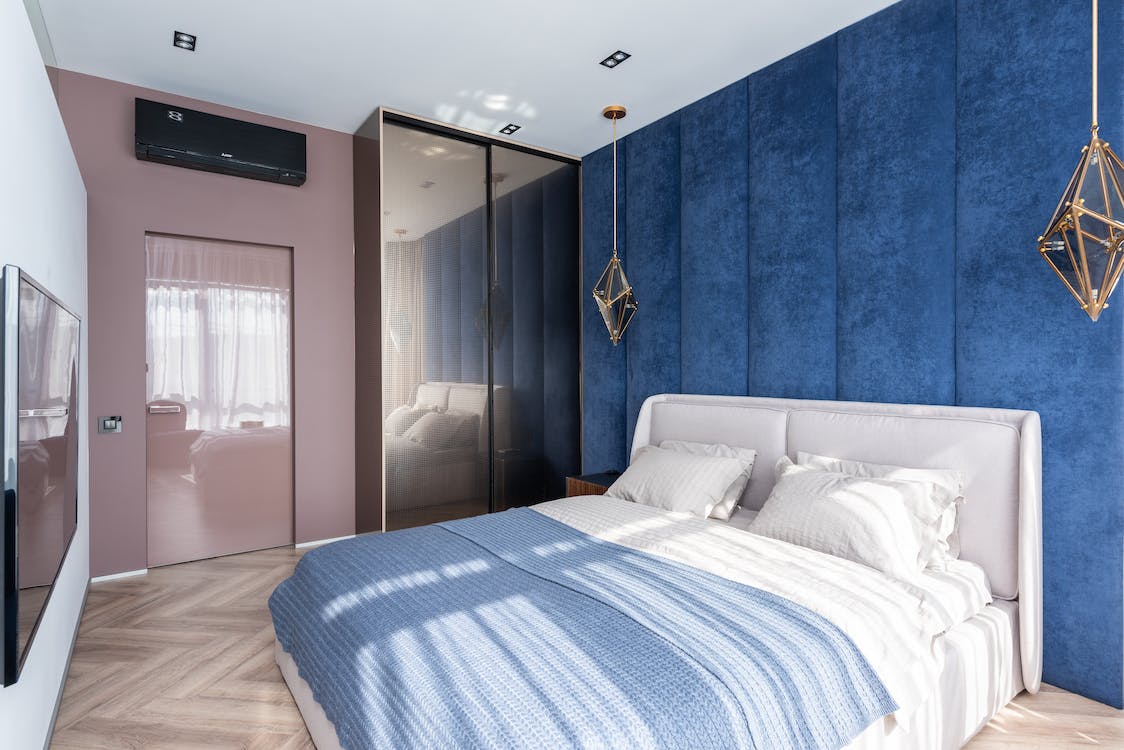Summary
– Wall Covering: Paint
– Wall Covering: Wallpaper
– Wall Covering: Wainscoting
The choice of interior wall covering is a major part of home decoration, as is the choice of floor covering. Depending on the room and the desired aesthetic, we will adopt paint, wallpaper or panelling.
Wall covering: paint

Painting is the easiest solution to implement. Affordable for small budgets, it is ideal for a sober and contemporary decoration. Another advantage is the assortment of shades.
There are three types of finish: matte, gloss and satin.
Two types of paint exist.
Oil-based paints (glycerol)
– Advantages: resistant to humidity, suitable for bathrooms, kitchens or high-traffic areas.
– Disadvantages: quite long to dry, contain solvents, give off a strong odour, not very ecological.
Water-based paints (acrylics)
– Advantages: adaptable to all surfaces, quick-drying, odourless, allow cleaning of tools with water, more environmentally friendly because there are no solvents.
– Disadvantages: poor resistance to humidity, need for an undercoat.
Wall covering: wallpaper
Traditional wall covering is back! You can use wallpaper alone or in conjunction with painted walls for a graphic effect.
There are three types of wallpaper:
– The ready-to-install: perfect for new walls, these papers offer a wide range of choices (embossed, smooth, vinyl, velvet, metallic, woven or vegetable fibres, imitation plaster, stone, etc.).
– Ready-to-paint: somewhat adapted to old walls or walls to be renovated. They are generally white, easy to apply, paint, or for a seamless decoration. These papers are less expensive but also less interesting for new construction.
– Non-woven: this new generation of wallpaper allows for a simplified installation. Apply glue to the wall, place the strip and then flatten it to fix it well. This improvement comes at a price: plus 10%, compared to a traditional roller.
One will adapt its wallpaper according to the house’s rooms (humidity, frequentation). Smooth papers are the most resistant, contrary to embossed and grainy papers, which can deteriorate if they are too close.
Note: always buy rolls from the same batch to avoid differences in shade.
Price: Starting at about $1.50/roll, up to more than $40 for a high-end paper.
Wall covering: Wainscoting

Most often offered in wood, wainscoting is also available in PVC or panels on a chipboard base. It is a practical solution when you want to decorate your home visibly and quickly.
There are three types of panelling:
– The wood panelling: The wood panelling strips come in different lengths and widths, but the wide strips are now widespread. The type of wood is considered according to the room of destination: a humid room requires a wood able to withstand moisture (exotic woods such as teak and bangkirai). At the same time, the pine and white fir will fit in a room with contemporary inspiration. On the contrary, oak gives a more traditional “chalet” atmosphere.
– PVC panelling: Very easy to maintain; this panelling is rot-proof and therefore has excellent durability. It is available in many shades and patterns and can imitate different materials, including wood. You can install the strips (length from 2.50 to 2.70 m and width from 10 to 37.5 cm) on the wall without any joints. A good compromise when you want to decorate a wet room, such as the bathroom, at a lower cost.
– Coated decorative panelling: This type of ready-to-install panelling on particle board or fiberboard is covered with melamine paper. It offers decors that reproduce the look and nuances of wood for a lower price. The strips are available in lengths of 2.60 m or 1.28 m. They allow a seamless installation on walls or ceilings, according to your desire.
The installation of the panels, whatever they are, is quite simple. Most often designed as ready-to-install, the boards are equipped with a “click” system for better interlocking.
Note: The cover surface is calculated by removing the doors and windows to determine the number of boards needed.
For wood panelling, it is helpful to leave the boards in the room where they will be installed for 48 hours to let them adapt to the ambient temperature.
To avoid differences in shade between batches, mix boards from several packages when installing.
Price: PVC and coated panels are the least expensive (starting at $10 per 2.6 m²). Solid wood can reach $40 for the same surface.
